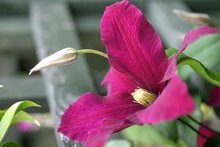
Many people are having to set aside their favorite hobbies and past times due to the current economic situation. This means that such activities as travel, cooking and even gardening will be reduced or eliminated thanks to financial strain. Of course this isn't always necessary, because there are many ways to save money and still enjoy favorite activities, such as gardening. In fact, many consumers are taking up gardening simply because it will eliminate the need to spend critical dollars at the grocery store.
What about people who want to garden for the beauty rather than the food? There are plenty of ways a garden can be enhanced or even created on a strictly limited budget during such an economic time as this. While selection of plants will have to be done carefully, with the majority being perennials that demand a single investment and years of relaxing maintenance, the bulk of garden planning will actually be around the various regions, structures and fixtures that will make the garden an area for seasonal enjoyment.
Let's examine a traditional backyard garden: it will have various beds laid out in formal or casual designs all around the entire garden space, there will be various fences, gates, arbors or benches and there will be a need for lighting. Gardening should not be something enjoyed only under the light of the midday sun, but also after hours when many fascinating creatures, night-blooming plants and their delicious aromas are present.
This requires lighting, and before you jump to the conclusion that an entire year's garden budget will disappear on this element alone, consider the installation of solar lighting fixtures. No longer the feeble and utilitarian objects from a decade ago, today's solar lighting fixtures are a gardener's best friend! There are subtle bollard fixtures for lining a garden path, small patio and hanging fixtures to accent a comfortable and private seating area and even post-style lights for placing by a garden gate.
Any gardener can enjoy the hobby using such solar garden lights and fixtures because they are easy to install - requiring no professional wiring or electrical services, they run by the power of the sun - meaning no bills or additional budget dollars, and they do not often need bulb replacement - they operate on LED bulbs which last for significantly lengthy periods and which demand infrequent maintenance, replacement or repair.
Creating a beautiful garden can be done on a recession era budget, and it requires some creative thinking and alternative solutions that will last a lifetime!
Jonathan Gal is a solar lighting expert and owner of YCA Solar Lights, an organization dedicated to promoting clean, energy efficient solar lighting technology. To find out more about how solar technology is changing the way we live, especially with respect to lighting, you are invited to visit: http://www.ycasolarlightstore.com
Article Source: http://EzineArticles.com/?expert=Jonathan_Gal










